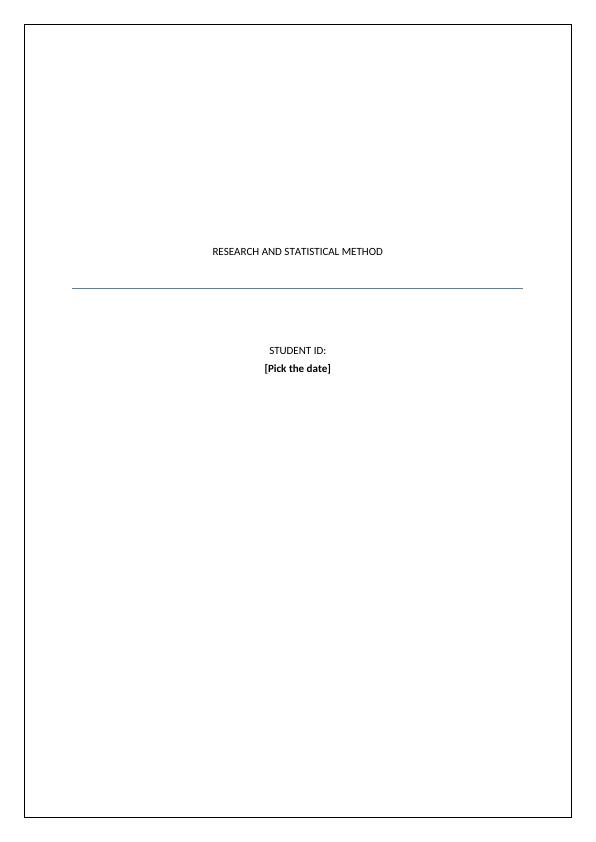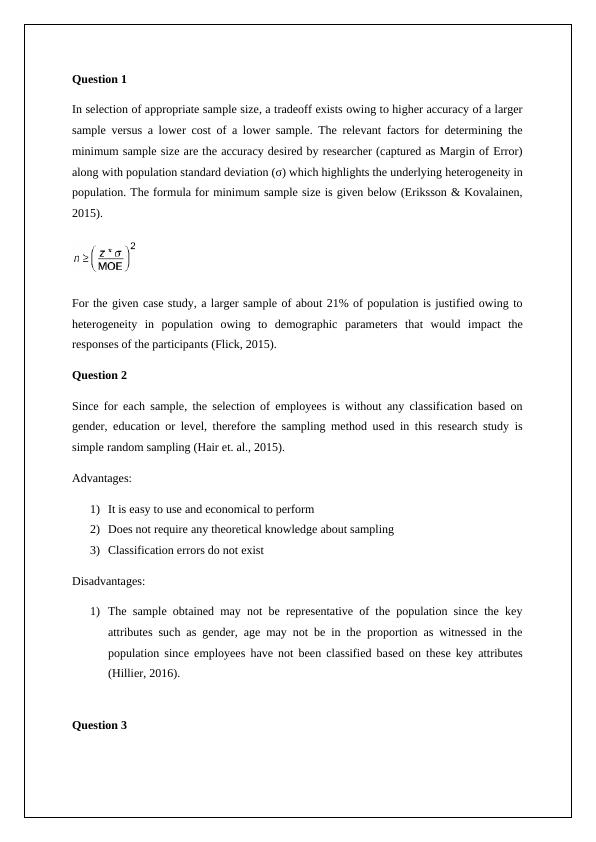Research and Statistical Method: Sample Size, Sampling Method, Reliability, Control Variables, and Research Design
Investigating the association between employee's perception of quantitative and qualitative job insecurity with job satisfaction and psychological distress in the Belgium banking sector.
5 Pages753 Words221 Views
Added on 2023-06-12
About This Document
This article discusses the selection of appropriate sample size, sampling method, reliability, control variables, and research design in research and statistical method. It covers the formula for minimum sample size, justification for larger sample size, advantages and disadvantages of simple random sampling, reliability and validity issues of quantitative job insecurity, qualitative job insecurity, and psychological distress, importance of control variables, and advantages and disadvantages of correlational research design.
Research and Statistical Method: Sample Size, Sampling Method, Reliability, Control Variables, and Research Design
Investigating the association between employee's perception of quantitative and qualitative job insecurity with job satisfaction and psychological distress in the Belgium banking sector.
Added on 2023-06-12
ShareRelated Documents
End of preview
Want to access all the pages? Upload your documents or become a member.
Research and Statistical Method: Assignment
|8
|2402
|28
Determining Sample Size and Sampling Method in Research
|8
|2422
|284
Research and Statistical Method - PDF
|8
|2295
|85
Statistical Modelling Assignment PDF
|12
|2377
|37
Suitable Sampling Strategy and Chi-Square Hypothesis Test for Fear of Flight and Simulator Sickness
|6
|861
|182
Statistical Modelling for Public Transport System in NSW
|10
|1794
|100


